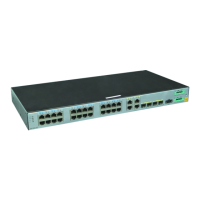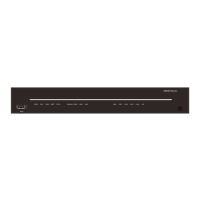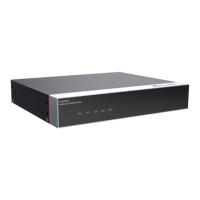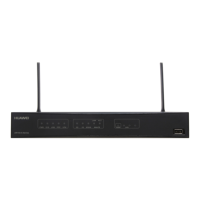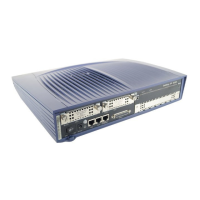Congestion Management
If a network transmitting both delay-sensitive and delay-insensitive services is congested
intermittently, congestion management is required. However, if a network is always
congested, bandwidth needs to be increased. Congestion management sends packet flows by
using queuing and scheduling.
An interface on the AR500&AR510&AR530&AR550&AR2500 has four or eight default
queues for outgoing packets. LAN-side interfaces support the scheduling modes of priority
queuing (PQ), deficit round robin (DRR), weighted round robin (WRR), PQ+DRR, and PQ
+WRR. WAN-side interfaces support the scheduling modes of PQ, WFQ, PQ+WFQ, and
class-based WFQ (CBQ). Each scheduling algorithm schedules specific types of traffic, and
affects bandwidth allocation, delay, and jitter.
Congestion Avoidance
Congestion avoidance is a flow control mechanism. A system configured with congestion
avoidance monitors network resource usage such as queues and memory buffers. When
congestion occurs or aggravates, the system discards packets.
The AR500&AR510&AR530&AR550&AR2500 supports tail drop and WRED.
l Tail drop
When the queue length reaches the upper limit, the excess packets (buffered at the queue
tail) are discarded.
l WRED
WRED sets the upper and lower drop thresholds and the maximum drop probability for
each queue. When the queue length is smaller than the lower threshold, no packets are
discarded. When the length of the queue exceeds the upper threshold, all packets are
discarded. When the queue length is between the lower threshold and the upper
threshold, incoming packets are discarded randomly. The drop probability cannot be
greater than the maximum drop probability.
The AR500&AR510&AR530&AR550&AR2500 uses the WRED based on queue
profiles or traffic policies.
For details about QoS features, see QoS Configuration Guide.
3.2.5 IPv6
The AR500&AR510&AR530&AR550&AR2500 provides the IPv6 host function, which
maximizes customers' return on investment (ROI) and prevents repeated investment during
network upgrade.
The AR500&AR510&AR530&AR550&AR2500 supports the following IPv6 functions:
l IPv6 ND
l IPv6 PMTU
l TCP6, UDP6, RawIP6, Ping IPv6, and Tracert IPv6
l ICMP6 and Socket6
l TFTP IPv6 client, TFTP IPv6 server, FTP IPv6 client, FTP IPv6 server, Telnet IPv6
client, and Telnet IPv6 server
The AR530 and AR2500 series also support the following IPv6 functions:
Huawei AR500&AR510&AR530&AR550&AR2500
Series Industrial Switch Routers
Product Description
3 Product Characteristics
Issue 02 (2016-11-25) Huawei Proprietary and Confidential
Copyright © Huawei Technologies Co., Ltd.
38

